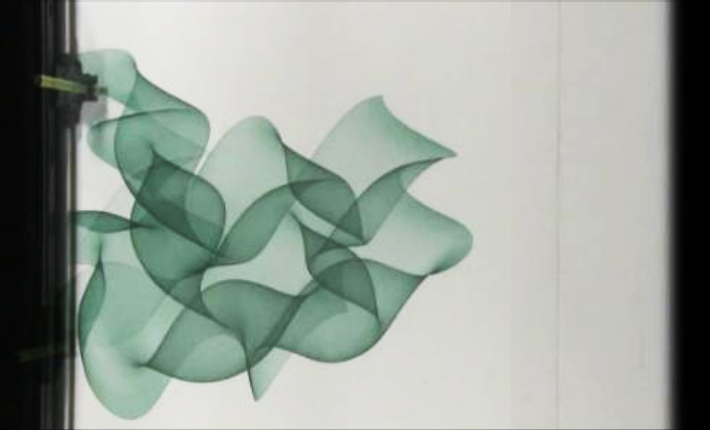ALGORITHMIC SIGNS
FONDAZIONE BEVILACQUA
LA MASA
Galeria di Piazza San
Marco,San Marco 71/c,
3014 Venezia,Italia
October 20 to December 3, 2017.
ROMAN VEROSTKO: work on display in Algorithmic Signs
Green Cloud as a Drawing Machine
An 8 hour video documentary of a drawing machine as it executes each line of the pen & ink drawing "Green Cloud".
Premier presentation from sunset to sunrise, June 3-4, 2011 at MCAD, Minneapolis, MN, USA.
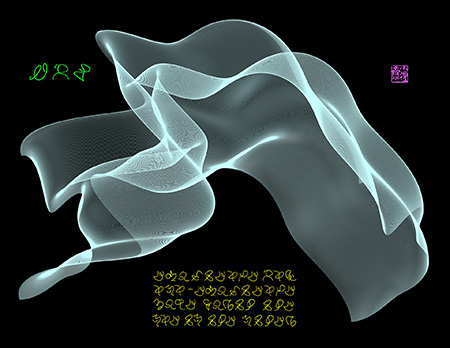
Apocalypse of San Marco: Lifting the Veil. Algorithmic Transformation, pigmented print, 22" by 17", 2017. Algorithmic glyphs are text quoted from the Tao Te Ching, Lao Tzu, J. Legge translation.
Upper left: WAY
Bottom script reads:
EXISTENCE AND
NON -- EXISTENCE
GIVE BIRTH THE
ONE TO THE OTHER
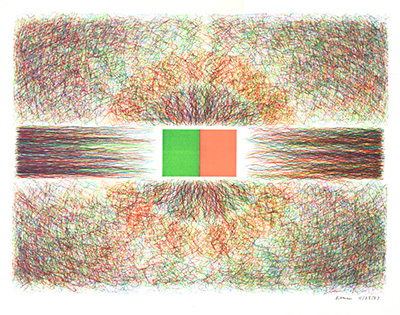
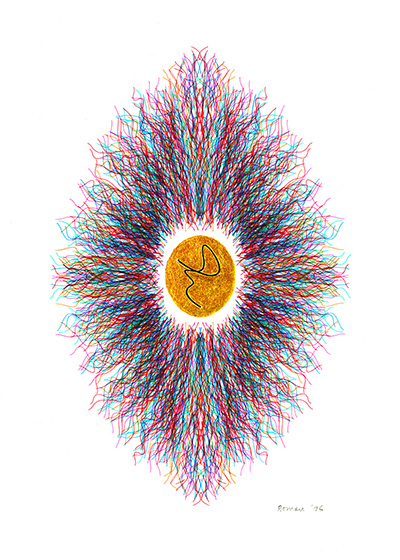
Sun Canticle, 1996. 13” by 19”
Algorithmic pen & ink plotter drawing. The central pen stroke was plotted with a fine brush and the gold leaf enhancement was applied by hand. This is the artist's most treasured Sun Canticle.
The radiant algorithm for this drawing dates from 1986.
**Cosmic Immersion & Canticle of the
Sun with
ecological concern & Canticle in Umbrian version.
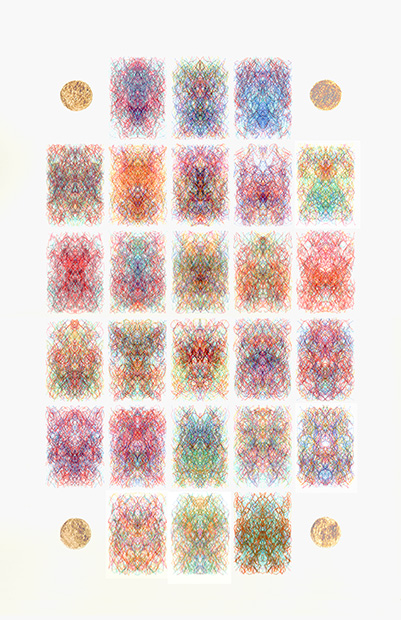
Twenty-Six Visions of Hildegarde, 23" by 29"Pen & ink plotter drawing with 4 gold leaf medallions. Courtesy DAM Gallery, Berlin.
Hildegarde von Bingen (12th C.) was a medieval mystic known especially for her illustrated work, Scivias, a discourse on 26 religious visions. The 26 plotted drawings, alluding to her 26 “visions”, were generated from the same parent code seeded with 26 numbers.
The four gold-leaf orbs, allude to medieval manuscript illumination. Verostko views his studio network of pen plotters as an electronic scriptorium where he illuminates 20th Century electronic scripts and drawings.
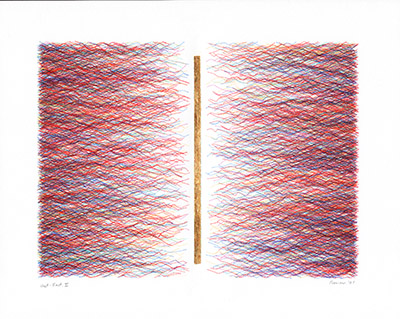
West-East, 23" by 29". Gold leaf by hand. Courtesy of DAM Gallery, Berlin.
Linear horizontal fields of form may be seen as "joining" or "separating".
The algorithms for this series date from 1987. This year 2000 version was created with the 1987 code.
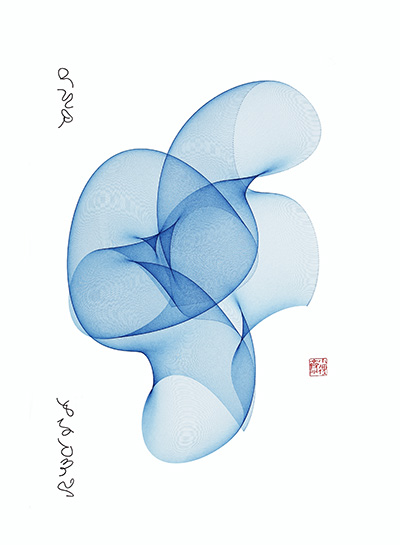
Courtesy of DAM Gallery, Berlin.
These works celebrate the charm and grace of algorithmic form, “the joy of digital”. They beckon us to ponder the process whereby the stark logic of algorithms generate exuberant playfulness and quiet undulation.
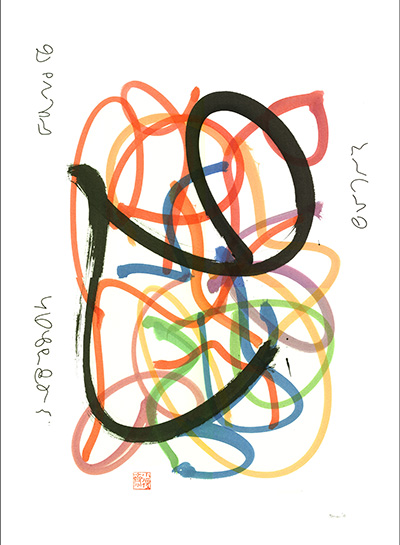
This brush drawing, generated by the artist's code, was executed with paint brushes mounted on the plotter drawing arm. There are 17 large brush strokes repeated in a column of calligraphic strokes viewed as a visual Haiku.
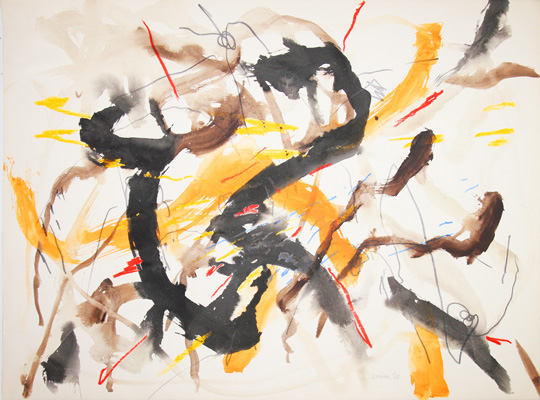
This 1963 expressionist painting was made by hand, by the artist in his pre-algorist period. His work as an abstract expressionist and , and experience with Chinese shufa, lead him to achieve expressionist qualities in his robotic brush work as in Frog Jump (above).
Two frontispiece examples, Derivation of the Laws, limited edition honoring George Boole (1990). 20" by 6" open position displays frontispieces. top: #82 Courtesy of the Spalter Collection; bottom: #43 Courtesy of the artist.
Two of 100 original pen, ink & brush plotted drawings bound into a limited edition of Chapter III from George Boole"s Investigation of the Laws of Thought . These examples, from a family of 100 originals, generated with the same "parent code", demonstrate the awesome leverage of form generating algorithms.. Each "one of a kind" form, bears a familial resemblance to all other forms generated by the same parent code. This may be the first example of a limited edition of books where each book includes original, "one of a kind" front and end pieces, in a family of forms. Roger Malina, who wrote the introduction for this edition, referred to this procedure as "post mechanical" reproduction.
